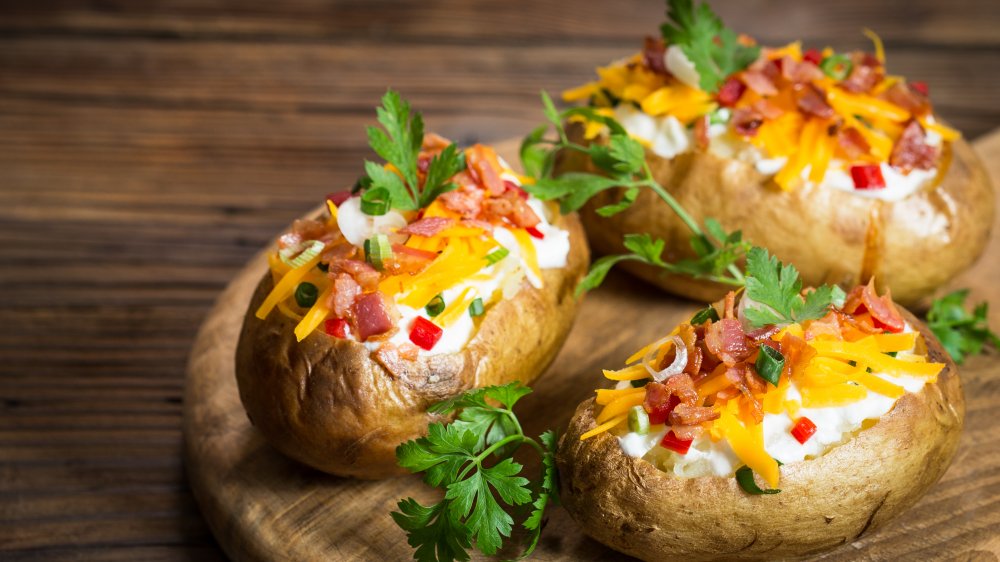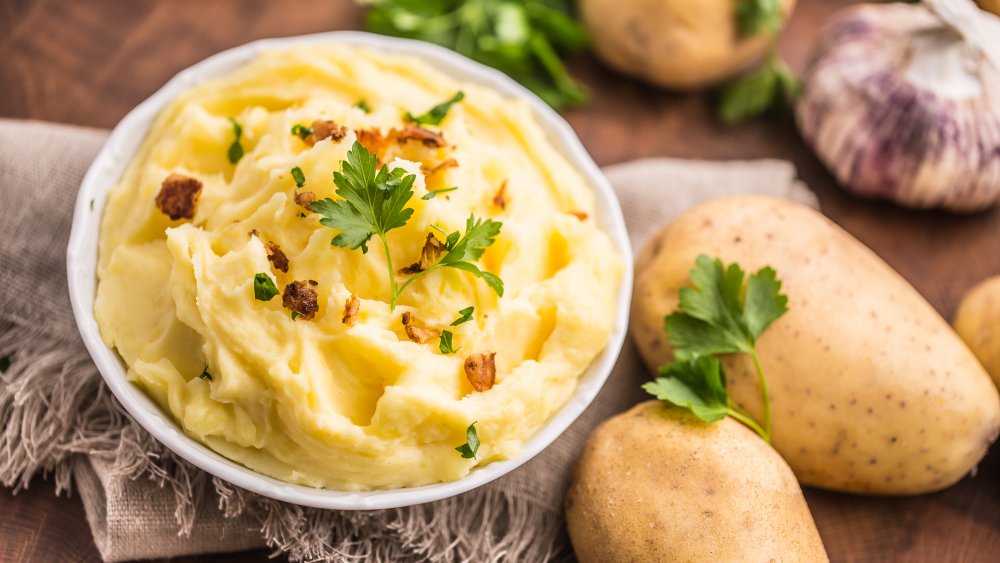The Difference Between Russet And Idaho Potatoes
A potato by any other name is still a potato, right? Well, not exactly. There are more than 200 varieties of potatoes sold throughout the US, each falling into one of seven potato categories: russet, red, white, yellow, fingerling, blue/purple, and petite (via Potatoes USA). When choosing a potato for a recipe, you want to consider if it's a starchy, waxy, or all-purpose potato, since the answer will ultimately affect the end result of your dish, according to The Spruce Eats.
Russet potatoes fall into the starchy potato category, according to The Spruce Eats. You're pretty safe grabbing a russet and using it to make baked or mashed potatoes. Taste of Home attests that russets are also perfect for scalloped potatoes, potato pancakes, and potato wedges. It's because of this versatility that we find huge mountains of russet potatoes in the supermarket. So what makes a typical russet and an Idaho russet potato different?
How are Idaho russet potatoes different from other russet potatoes?
Nine out of 10 Americans already associate potatoes with Idaho, with 72 percent being inclined to choose potatoes from Idaho over potatoes from other states, according to The Idaho Potato Commission. But is this clever marketing, or a real taste difference? Henry Spalding, a missionary, brought potatoes to Idaho in the 1830s, and the state now produces one third of the country's potatoes (via Potato Grower). Idaho potato varieties include russet, red, fingerling, and gold, with the majority of potatoes offered from Idaho being russet.
Idaho's growing environment includes warm days, cool nights, mountain-fed irrigation and rich volcanic soil, according to The Idaho Potato Commission. They say that it's this ideal agricultural climate that helps Idaho russets develop low-moisture and high solids for fluffier baked potatoes, crispier french fries, and tastier mashed potatoes. What do you think? Have you tried an Idaho russet lately? Maybe it's time you do.

